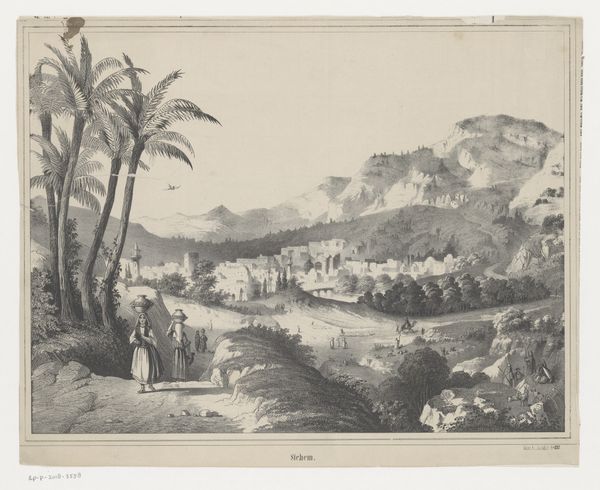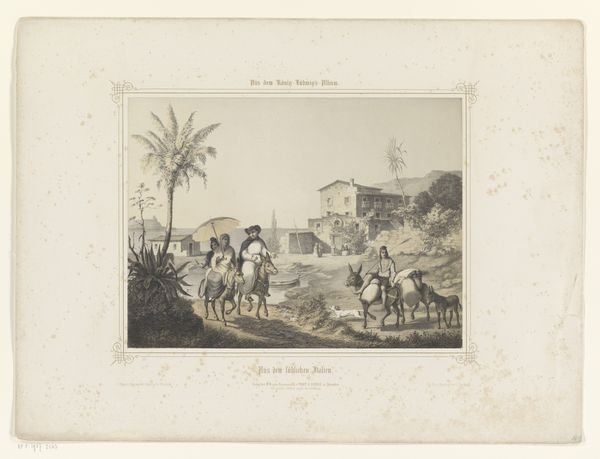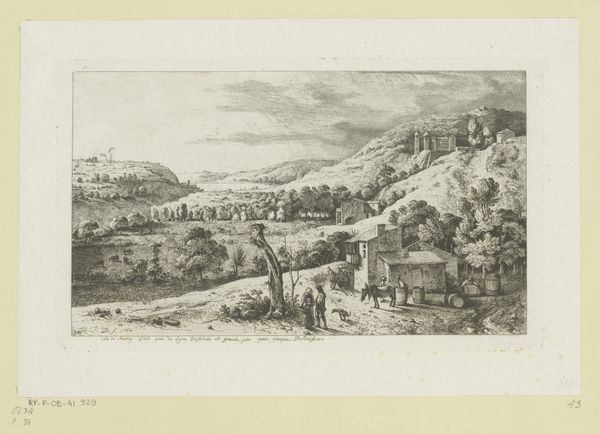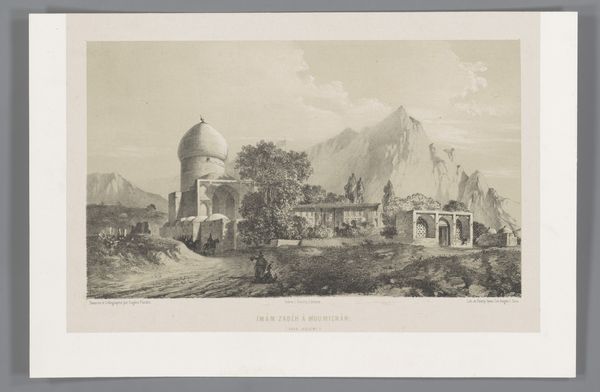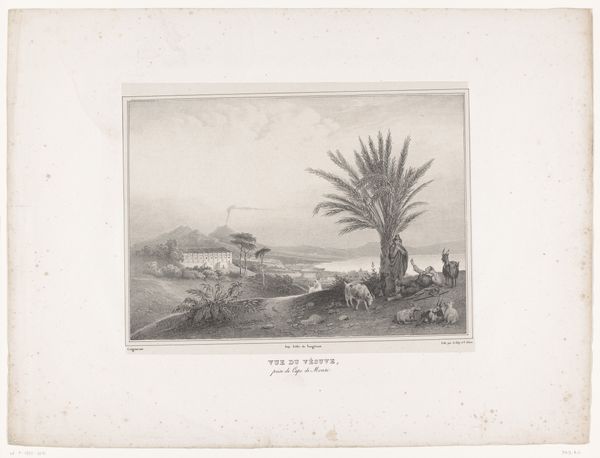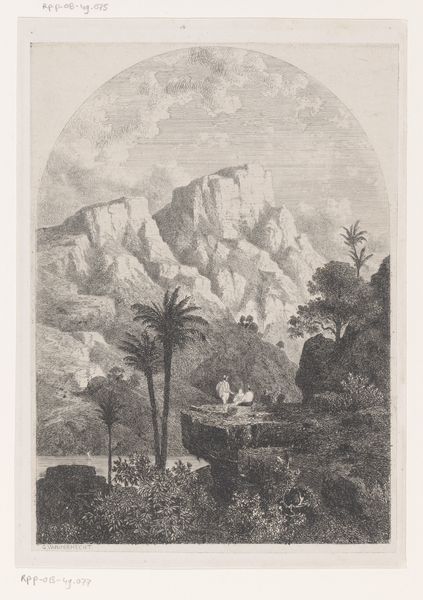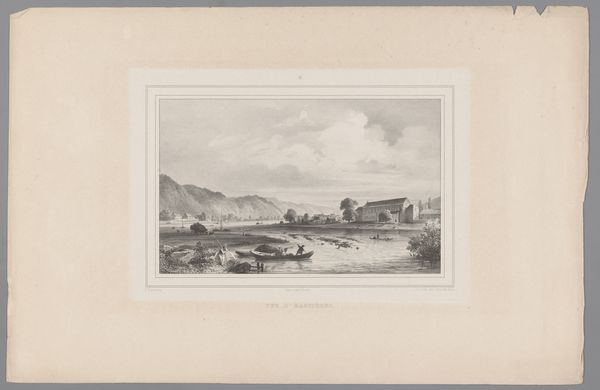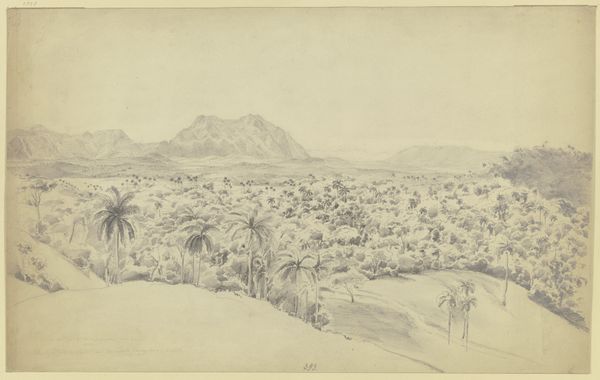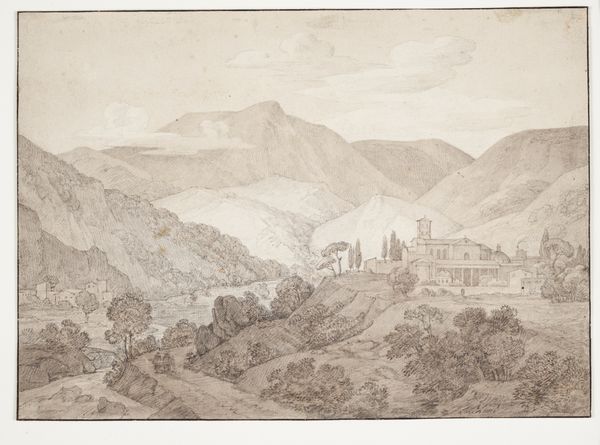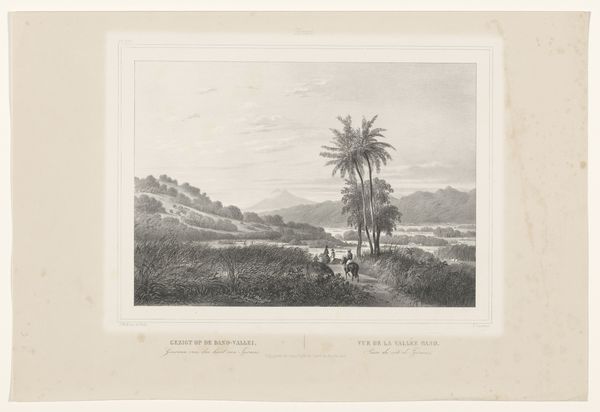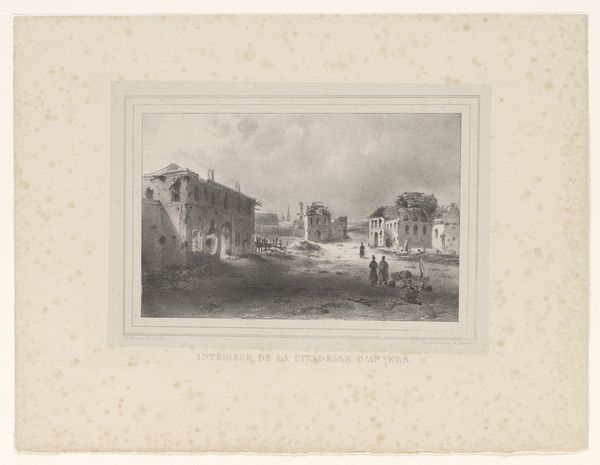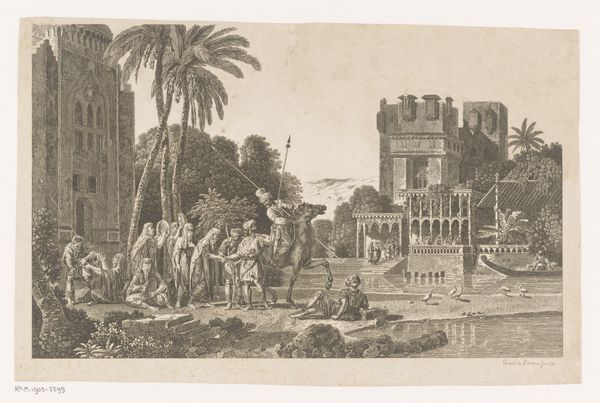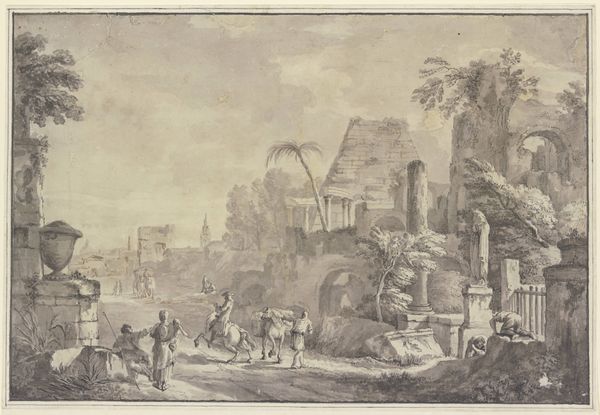
drawing, paper, ink
#
drawing
#
landscape
#
paper
#
ink
#
islamic-art
#
watercolour illustration
Dimensions: height 275 mm, width 434 mm
Copyright: Rijks Museum: Open Domain
Curator: Here we have Eugène Flandin’s “Ruïnes van Bishapur,” a drawing executed between 1843 and 1854, rendered in ink on paper. Editor: What a fascinating interplay of desolation and serenity. The crumbling architecture evokes a palpable sense of history, yet the landscape emanates such peace. Curator: It certainly captures a specific historical and cultural moment. Flandin, a French Orientalist painter, was part of a diplomatic mission to Persia during the reign of Mohammad Shah Qajar. These visual records, like this one, served to document and, in many ways, claim knowledge of these distant lands for a European audience. Editor: The ruined structures really speak to me. That domed structure, for instance – even in decay, the archways and geometric patterns hint at a sophisticated design. I’m drawn to how the palm trees, recurring motifs in such imagery, act as emblems of the exotic "Orient." Curator: Exactly. It is crucial to remember that this wasn't objective documentation. Images like these actively participated in shaping European perceptions of Persia and Islamic culture. Notice how the figures are positioned—almost as if staffage, picturesque elements in the foreground to emphasize the grandeur of the scene. Editor: And isn't that figure in the foreground so interesting? Robed and walking away from the viewer along the worn path? A symbolic envoy, or maybe just another man making his way through the dunes. Curator: Or maybe just an impression of exoticness, not a person at all. We should be aware of how the Western gaze has historically interpreted and often misinterpreted these cultures. Art was being used as part of the project to explain Persia and Persia’s story to Europe, influencing political discourse. Editor: Absolutely. These visuals often served political and social purposes, reinforcing existing power structures, as much as conveying knowledge about distant lands. Curator: By engaging with this drawing critically, acknowledging its historical context, we can better understand not just the ruins of Bishapur but also the complex interplay between art, politics, and cultural representation. Editor: Indeed, it serves as a visual portal, inviting us to engage with both a landscape and the historical currents that shaped its portrayal.
Comments
No comments
Be the first to comment and join the conversation on the ultimate creative platform.
